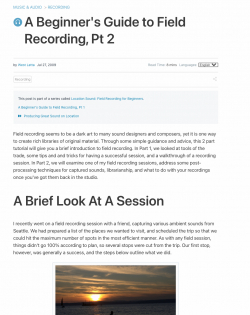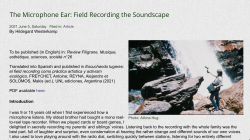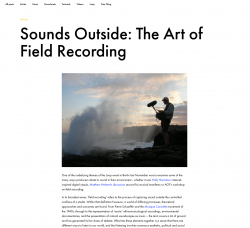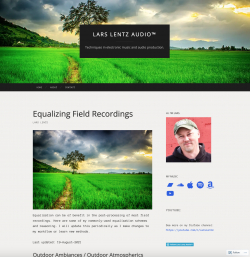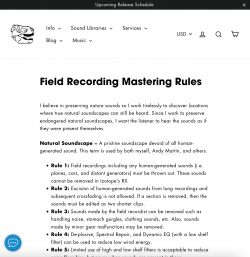A Beginner's Guide to Field Recording, Pt 1
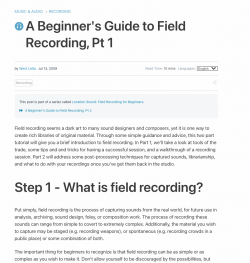
Type
Publication
Authors
Latta ( West Latta )
Category
Blog
[ Browse Items ]
Publication Year
2009
Publisher
TutsPlus.com, United States
URL
[ private ]
Tags
Abstract
Field recording seems a dark art to many sound designers and composers, yet it is one way to create rich libraries of original material. Through some simple guidance and advice, this two part tutorial will give you a brief introduction to field recording. In Part 1, we'll take a look at tools of the trade, some tips and and tricks for having a successful session, and a walkthrough of a recording session. Part 2 will address some post-processing techniques for captured sounds, librarianship, and what to do with your recordings once you've got them back in the studio.
Step 1 - What is field recording?
Put simply, field recording is the process of capturing sounds from the real world, for future use in analysis, archiving, sound design, foley, or composition work. The process of recording these sounds can range from simple to covert to extremely complex. Additionally, the material you wish to capture may be staged (e.g. recording weapons), or spontaneous (e.g. recording crowds in a public place) or some combination of both.
The important thing for beginners to recognize is that field recording can be as simple or as complex as you wish to make it. Don't allow yourself to be discouraged by the possibilities, but rather start by taking a simple walk around your neighborhood with a low-profile and simple setup. The results will surprise you and you may find that you are instantly rewarded with unique, original material to add to your library...
Step 1 - What is field recording?
Put simply, field recording is the process of capturing sounds from the real world, for future use in analysis, archiving, sound design, foley, or composition work. The process of recording these sounds can range from simple to covert to extremely complex. Additionally, the material you wish to capture may be staged (e.g. recording weapons), or spontaneous (e.g. recording crowds in a public place) or some combination of both.
The important thing for beginners to recognize is that field recording can be as simple or as complex as you wish to make it. Don't allow yourself to be discouraged by the possibilities, but rather start by taking a simple walk around your neighborhood with a low-profile and simple setup. The results will surprise you and you may find that you are instantly rewarded with unique, original material to add to your library...
Description
https://music.tutsplus.com/tutorials/a-beginners-guide-to-field-recording-pt-1--audio-1785
Number of Copies
1
| Library | Accession No | Call No | Copy No | Edition | Location | Availability |
|---|---|---|---|---|---|---|
| Main | 293 | 1 | Yes |
